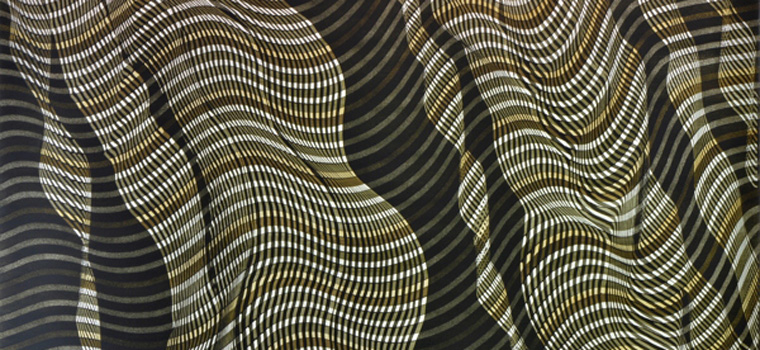
lisa wolfgramm
- new work [19]
- new works [17]
- poured [13]
- pulse [09]
- lisa wolfgramm [07]
- lisa wolfgramm [06]
- melbourne art fair stand [06]
- art sydney [05]
- paintings 138-150 [04]
- lisa wolfgramm [04]
- the white show [04]
- sir charles gairdner hospital biennial art award [03]
- lisa wolfgramm [02]
- lisa wolfgramm [01]
stockroom work
Born in Melbourne in 1959, Lisa moved to Perth in 1975 and graduated from WAIT, (now Curtin University), in 1987. She has taught painting at Edith Cowan University, TAFE and the Claremont School of Art over the past 12 years, acted in a mentoring role for Disadvantage and Disability in the Arts Australia (DADAA), as well as exhibiting extensively
Lisa’s abstract paintings are comprised of multi-layers of paint, with the surface manipulated to reveal the preceding layers. More formal grid like patterns have recently given way to sensuous waves, whilst still retaining her unique paint application process. Lisa has exhibited extensively since graduating from Curtin University in 1987 and has work in every major collection in Western Australia.
"My interests concern the practice of pictorial abstraction and the implications of this in the contemporary context. During the past ten years my work has focused on the methods and material processes of painting. The canvas is treated as a field to be activated through material manipulation applied across the whole surface.
The work has developed through a systematic approach to material experimentation. It evolves through continued visual research involving the development of various technical approaches and methods of applying and manipulating paint.
I am interested in repetition and coding as alternatives to language and representation. The paintings are abstract and not abstractions; they are derived not from a re-presentation of the natural world but a presentation of the nature of a material process under controlled circumstances, the imagery is therefore intrinsic, they are paintings that aspire to an aesthetic self-sufficiency.
The images are created through a series of predetermined actions, interventions or gestures, which are applied across the canvas layering transparent and opaque oil paint to create a surface that embodies a tension between material and image. The resulting rhythmic patterns are the consequence of a set of strictly imposed rules that govern the painting process.
The work has a strong relationship to the history of abstract painting. Aspects of formalism, minimalism and action and process painting permeate the work."
Lisa Wolfgramm 2009
- TURNER GALLERIES | showcasing contemporary art
at 470 WILLIAM STREET NORTHBRIDGE WESTERN AUSTRALIA 6003 - TURNER GALLERIES HAS NOW CLOSED.
This website is an archived record of the exhibitions and artwork shown at the gallery. - Turner Galleries acknowledges the Whadjuk Nyoongar people as the Traditional Owners of the lands and waters where Turner Galleries is situated, and pay our respect to Elders past, present and emerging.
- Website © 2000-2024 TURNER GALLERIES. All images are © the artists and are not to be used without permission.
- This is a millapede project.